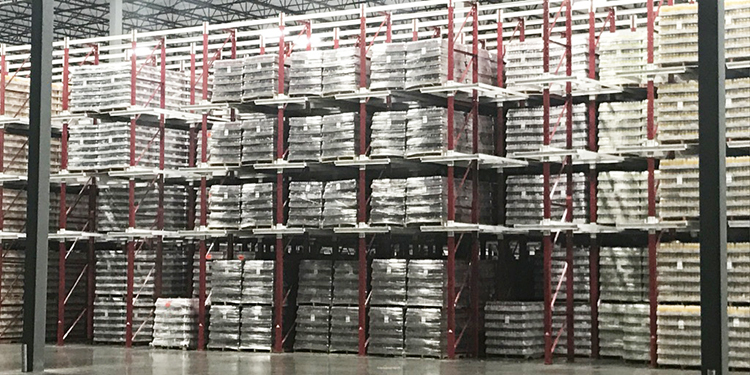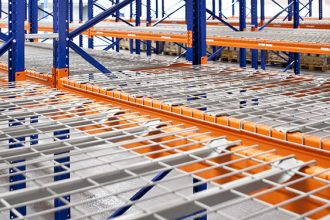Key Considerations For The Design And Use Of Dual-Bay Drive-In, Drive-Thru Rack

Designed and engineered for highly dense, two-at-a-time loading, unloading, and storage of pallets of uniform product, dual-bay drive-in and drive-thru storage racking maximizes the available cube of warehouse or distribution center. Because these systems minimize the number of aisles needed for load transport and access, they create additional pallet storage positions for a more effective use of a building’s footprint. (A drive-in dual-bay system allows drivers to load and retrieve two pallets from the same entry point at which they were loaded for last-in/first-out (LIFO) access. In a dual-bay drive-thru system, two pallets are loaded at the same time on one side then unloaded on the other for first-in/first-out (FIFO) workflow, ensuring that the oldest material is picked first.) When thinking of installing such a structure, there are a few key design and application considerations to be aware of. These include:
- Dual-bay drive-in and drive-thru rack is designed to accommodate a specific type of forklift. Only that type of vehicle should be used to load and unload the rack. Although the width of the vehicle itself is less of a concern in a double-wide bay application, the structure should be designed in alignment with the maximum reach height of the mast to ensure the two sets of loaded forks can safely reach the highest level.
- Drive-in and drive-thru rack with double-wide bay openings are engineered and constructed with specific column placement and rail widths to accommodate a certain pallet dimension and type. Using a narrower pallet could result in the load falling through the support structures. Attempting to load pallets that are wider could impact the uprights, causing damage to the columns. Should an operation wish to store multiple pallet dimensions in this type of racking, advise the manufacturer or engineer at the outset of the project; some structures can be designed to accommodate more than one pallet width.
- Although there are fewer aisles for travel and access in dual-bay drive-in and drive-thru rack systems, the aisles that are included will be wider than those typically deployed with selective rack. That’s because the aisles need to accommodate two forklifts each carrying two pallets passing each other, as well as include space for a pedestrian walkway. In a dual-bay application, aisle widths range from 14 to 20 feet, with 16 feet being the most frequently used dimension.
- Because these systems are designed with upright frames, rails, and ties (but no horizontal beams except at the very top), they are engineered with columns and baseplates that meet specific stability and rigidity requirements; that is, they tend to be heavier and use more anchors to connect the system to the floor. Additionally, many manufacturers recommend engineering the front entrance columns and supports of dual-bay rack to be more robust, as those components are the most likely to be impacted by forklift traffic and loads.
- Train all forklift operators interfacing with dual-bay drive-in and drive-thru rack on the proper best practices for safely loading and unloading the system, as these structures require the load to be lifted to its designated position height prior to the vehicle entering the rack. Additionally, ensure that all personnel know to report any damage to the rack (bent columns, missing or sheared off anchor bolts, etc.) immediately to management; damaged rack should be promptly isolated and removed from service until it can be inspected and assessed for repair or replacement by a qualified, professional rack engineer.
Have more questions about dual-bay drive-in or drive-thru rack and whether one of these systems is a good fit for your operation? The members of RMI are available to answer questions and offer guidance on this and many other industrial steel storage rack questions.


